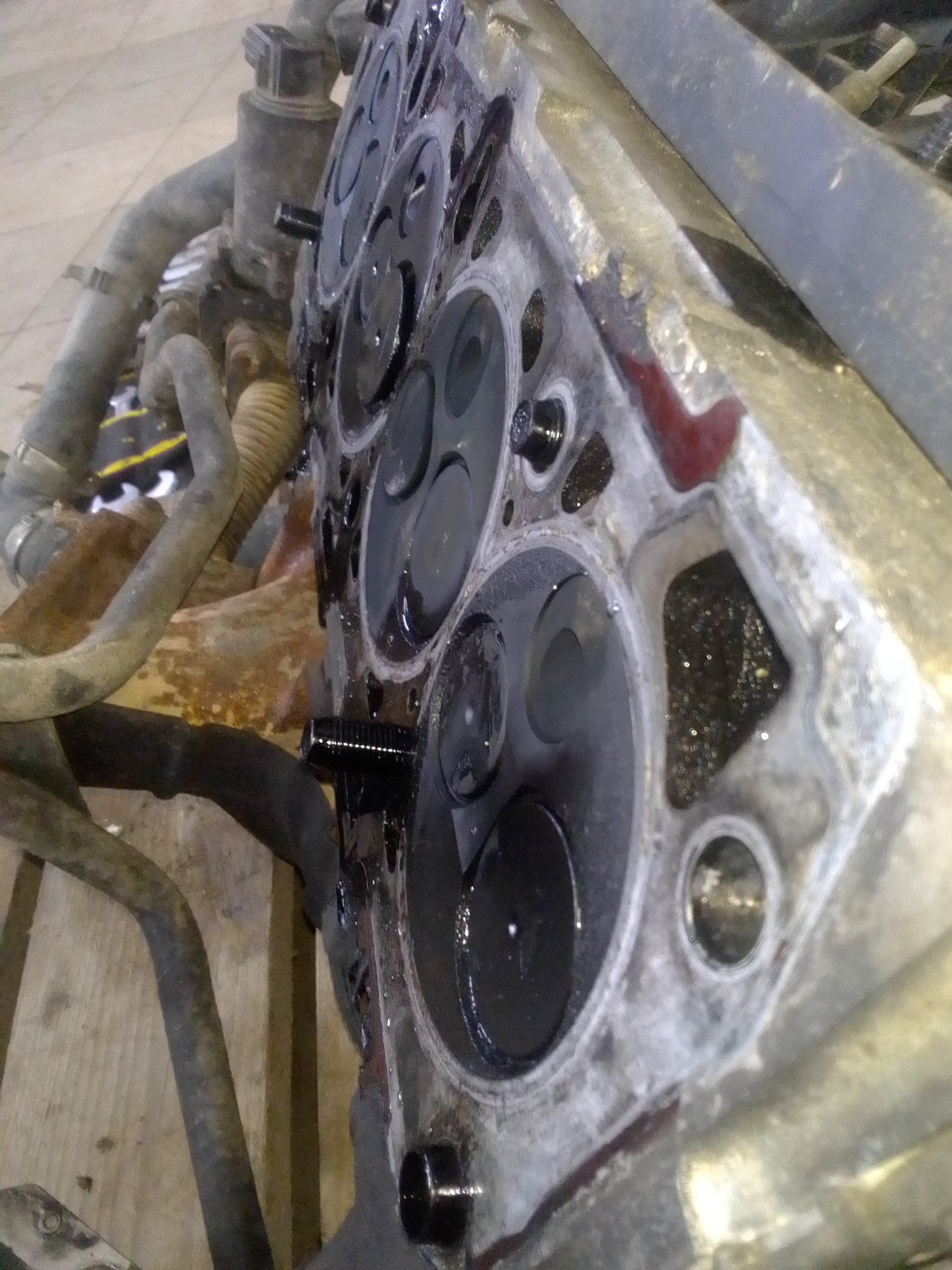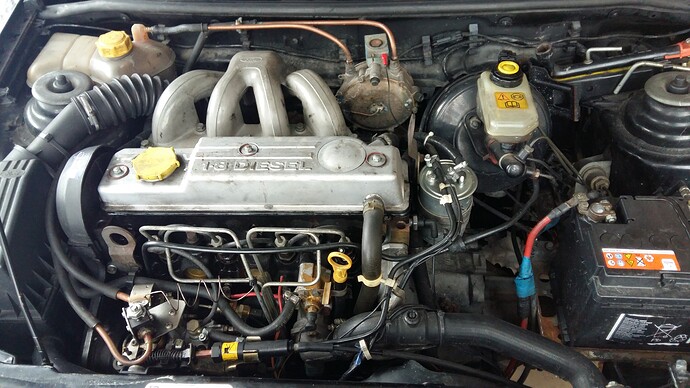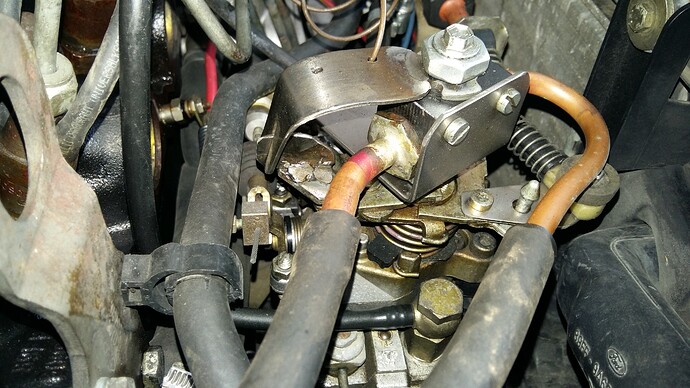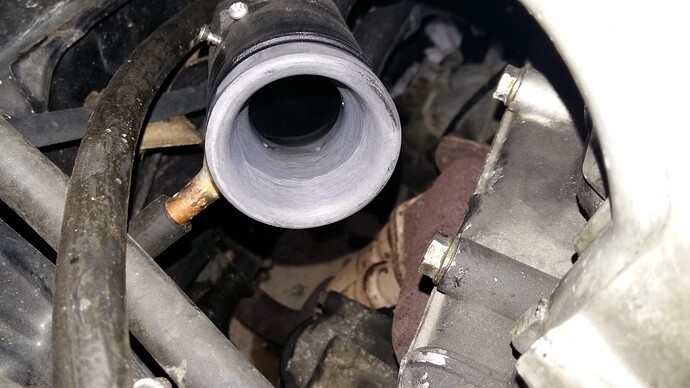Hello everyone, I’m opening a new topic about how things will go with the conversion of the Fiat Doblo 1.9d van in 2004 from a diesel to generator gas. I would like to use the gas-diesel cycle, so that there is a minimum of alterations and if the brains of the car and the fuel system do not start kicking (turn off the diesel fuel supply completely when running on gas), then I will leave it that way, otherwise I will install candles and a distributor and also remove the parts of the prechamber.
Hi Joni,
The Doblo 2004 model appears to be a different motor with common rail direct injection.
The 2001 to 2003 model where with indirect injection / prechamber.
Can you post a picture of the engine please ?
As you can’t run in diesel mode with only gas, there is the possibility to play around with injection timing and giving it a bit more than idle amount of diesl all the way. Otherwise you’ll have to convert.
As those 2003 and 2004 engines are high compression engines ( CR 22-1 ) its going to be tricky to run without conversion to spark.
Will depend on what model engine it is…
Looking forward to hear it roar
Yes, this is exactly the same engine with a prechamber and a volume of 1910 cm³.
Good to hear from you and Joni. Hope you both had a wonderful holiday and soon will have a new year coming. Koen what new gasification projects have you been working on? Answer on your site. Thanks.
Bob
Hello Joni,
The modern Fiat (V M Motori’s) common rail diesels have been used here in the US since ~2004 in some Chrysler/Jeep vehicles.
Bad news - Good news.
Those I’ve seen here are fully electrically controlled.
I think it may be very difficult to lock it into a minimal diesel fuel delivery. Will not be like a mechanical injector pumped type. Also with no timed mechanical pump drive you will be unable to easy direct retrofit a mechanical drive ignition distributor.
The Good news. These modern diesel Fiat engines here do have installed crankshaft, camshaft, and other electronic sensors.
At least here North American these can be fed into retrofit laptop programmable electronic ignition systems.
Get prepared for a learning curve on the needs and capabilities of true electronic ignitions. You will want a Coils-Near-Plug system. Individual per cylinder coils with short spark plug wires.
It will be a doable conversion.
Regards
Steve Unruh
Hi back Joni,
I was wrong. NOT a V M Motori engine.
So one of three different Fiat diesel engine families: “D”, JTL, MultiJet; in five different models.
Which is yours?
Same comments on Diesel common-rail systems applies.
Regards
Steve Unruh
Hi Steve.
I have “d”
Joni, this is the latest generation of vortex engine chambers, high compression, insensitive to fuel purity, but slightly poorer thermal efficiency. You probably intend to add wood gas with a small amount of diesel fuel, this works very well, but I do not recommend 100% wood gas, the nozzles will burn.
Mixing oil also works well, it can be used, the high-pressure pump seals better for adding a small amount of fuel and also the nozzle
Іn fact this car came to me with two engines and both were disassembled. I polished the engine belonging to the van from the factory, the cylinders were 0.25 mm before the first repair, I bought new pistons and rings, also a set of sleeve bearings for the crankshaft, gaskets, and so on. The car was driving but it was smoking very heavily and ate butter. The second engine was bought separately, but it turned out that it also smokes. I plan to assemble my darling motor properly and just try to give it wood gas while idling with diesel fuel to see if the fuel will turn off completely. I will also repair the second motor, but I will try to derate it a little by using two cylinder head gaskets and disassembling the prechamber. I will also install spark ignition and candles. It will be completely gas.
Joni , now I can tell you something about the wood gas diesel engine , when you add gas to an unloaded engine the engine revs up and the regulation shuts off the diesel fuel but even at such high compression the gas does not ignite itself , as a result the revs drop , the pump starts to dose the fuel and the revs go up again , in short there is rev oscillation and blue smoke on the exhaust. Diesel fuel is needed for proper ignition , try to think how to dose the gas as needed and how to limit the amount of diesel fuel , I’m afraid this Fiat has an electronically controlled diesel pump , …the signal from the mass air meter can be reduced by a potentiometer ,…

Candles? Spark plugs or glow plugs?
Hi Bob, sorry for not responding sooner.
I have been tied up in Covid conditions quite a bit, thank god not have been infected , yet.
Besides the factory project, moving forward slowly, i have been busy with a lot of small experiments, including gasification.
Also help full to the topic: Experiments into mixing gas, any gas, with diesel injection.
Nowadays, if you are able to tune your ECU system and change the performance, then you also can adjust towards mixed fuel, combustion timing, AFR and knock sensors…
Spoiler alert: it all works…
I have on my table now, small high speed electric turbines, to compensate for the drag of a gasifier… again, spoiler, it works…
I use following mindset:
Performance relies on the effort you give it…
believe in what you do, whatever you try… don’t bluntly believe someone that say it can’t…
If i say it can be done, then rest asure, some of you can and will do better…
If things are done DIY, with effort, they outperform what’s been designed to make profit…
Hi Tone,
I would prefer it to be an electronic controlled system as those are quite easy/inexpensive to modify to run dual fuel.
But, Joni, if its a D model, without throttle body, plain open air intake, then be aware of the valve stems to suck in oil at the intake valves ( caused by the inevitable throttle you make with a gasifier )
The high compression from the standard diesel, without an extra gasket to reduce CR, will make it difficult /impossible to have it run on woodgas , knocking problems by the amount of hydrogen in the gas.
Hello Koen, reducing compression is also possible by lowering the upper part of the pistons, as they already have a recess in the combustion chamber, maybe 2 mm. Dosing of gas is also possible only by opening the damper, while the air is slightly muffled, say with a vacuum damper, so the engine is always in a slight vacuum, say 0.9 bar and CR smaller.
https://sl.dum-vybaveni.cz/preverite-ventil-za-vodo-517
Hi Tone,
Yes, working on the piston head, as seen on the pictures of Joni, makes most sense.
Now, depends you gas, you can opt for convex or for concave dome head of the piston…
Depending the speed / rpm / torque you want to achieve, you can make things beforehand, so the result would near your expectations.
As heads up, any engine will run… but not every engine will perform under desired load.
Installing a AFR sensor/gauge is most helpful.
In Joni’s case, valve stems to be looked at, most likely they don’t have a seal.
Any case… its so much fun…
One more hint for DIY fun lovers…
Build a “pot” in your exhaust pipe line, filled with mix of old oils, plastic oil, pyro oil… the open end can go either to the intake of your gasifier, or if you use cleaner fuel, the fumes can be mixed with the air at airintake engine… you’l be amazed about performance
Great to hear from you Koen. Good to hear you two are healthy and well.
Thank you for the spoiler alerts.
This is a great use of exhaust out of the engine to make a more burn able fuels. This reduces the engine waste of internal combustion engine losses.
Looking forward to your new findings you have been experimenting in.
Bob
A few years ago, I installed a propane addition system on a diesel engine, somewhere around 25% addition. The engine was a Ford 1.8 diesel CR 1:22. I muffled the diesel fuel, installed a ball valve above the steering lever, which I changed the shape of the hole in the ball, and the gas was then mixed in the venturi nozzle. I found pictures somewhere … The power rose significantly, and the exhaust was gray, like a gasoline engine.




